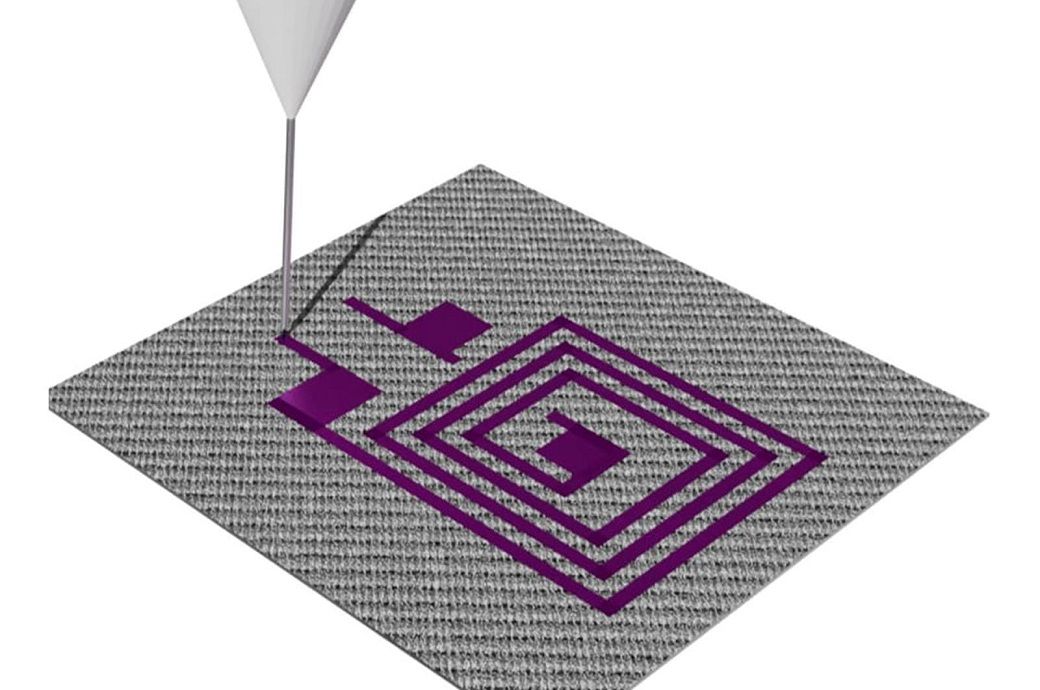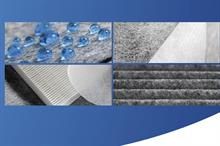
Published in the journal Materials Today, the paper describes the process and viability of building the grid by printing on nonwoven cotton textiles with an ink composed of MXene, a type of nanomaterial created at Drexel, that is at that same time highly conductive and durable enough to withstand the folding, stretching and washing that clothing endures.
The proof-of-concept represents an important development for wearable technology, which at present requires complicated wiring and is limited by the use of rigid, bulky batteries that are not fully integrated into garments, Drexel University said in a press release.
“These bulky energy supplies typically require rigid components that are not ideal for two main reasons,” said Yury Gogotsi, PhD, distinguished university and Bach professor in Drexel’s College of Engineering, who was a leader of the research. “First, they are uncomfortable and intrusive for the wearer and tend to fail at the interface between the hard electronics and the soft textile over time — an issue that is especially difficult to tackle for e-textiles is the issue of washability.”
By contrast, the team’s proposed textile grid was printed on a lightweight, flexible cotton substrate the size of a small patch. It includes a printed resonator coil, dubbed an MX-coil that can convert electromagnetic waves into energy — enabling wireless charging; and a series of three textile supercapacitors — previously developed by Drexel and Accenture Labs — that can store energy and use it to power electronic devices.
In addition to testing the grid with small electronic devices, collaborators from the University of Pennsylvania, led by Flavia Vitale, PhD, an associate professor of neurology, have demonstrated that it can also power wireless MXene-based biosensor electrodes — called MXtrodes — that can monitor muscle movement.
“Beyond on-garment applications requiring energy storage, we also demonstrated use cases that may not require energy storage,” said Alex Inman, PhD, who helped to perform this research during his internship at Accenture Labs, while a doctoral student and research assistant with Gogotsi in the AJ Drexel Nanomaterials Institute. “Situations with relatively sedentary users — an infant in a crib, or a patient in a hospital bed — would allow direct power applications, such as continuously wireless powered monitoring of movement and vital signs.”
In this vein, they also used the system to power an off-the-shelf array of temperature and humidity sensors and a microcontroller to broadcast the data they collected in real-time. A wireless charge of 30 minutes powered real-time broadcasts from the sensors — a relatively energy-intensive function — for 13 minutes.
And lastly, the team has used the MX-coil to power a printed, on-textile heating element, called a Joule heater that produced a temperature gain of about 4 degrees Celsius as a proof-of-concept.
“Many different technologies could be powered by wireless charging. The main thing to consider when picking an application is that it needs to make sense for a wearable application,” Gogotsi said. “We tend to think of biological sensors as a very enticing application because this is the future of health care. They can be integrated directly into textiles, increasing the quality and fidelity of the data and increasing user comfort. But our research shows that a textile-based power grid could power any number of peripheral devices: fibre-based LEDs for fashion or job safety, wearable haptics for AR/VR applications like job training and entertainment, and control external electronics when a stand-alone controller may be undesirable.”
The next step for developing this technology involves showing how the system could be scaled up without diminishing its performance or limiting its ability to be integrated into textiles. Gogotsi and Inman anticipate MXene materials holding the key to translating a variety of technology into textile form. Not only can MXene ink be applied to most common textile substrates, but a number of MXene-based devices have also been demonstrated as proof-of-concept, the release added.
“We are producing enough power from the wireless charging to power a lot of different applications, so the next steps come down to integration,” Inman said. “One large way MXene can help with this is that it can be used for many of these functionalities —conductive traces, antennae and sensors, for example — and you do not have to worry about material mismatches that may cause electrical or mechanical failure.”
Fibre2Fashion News Desk (RR)

